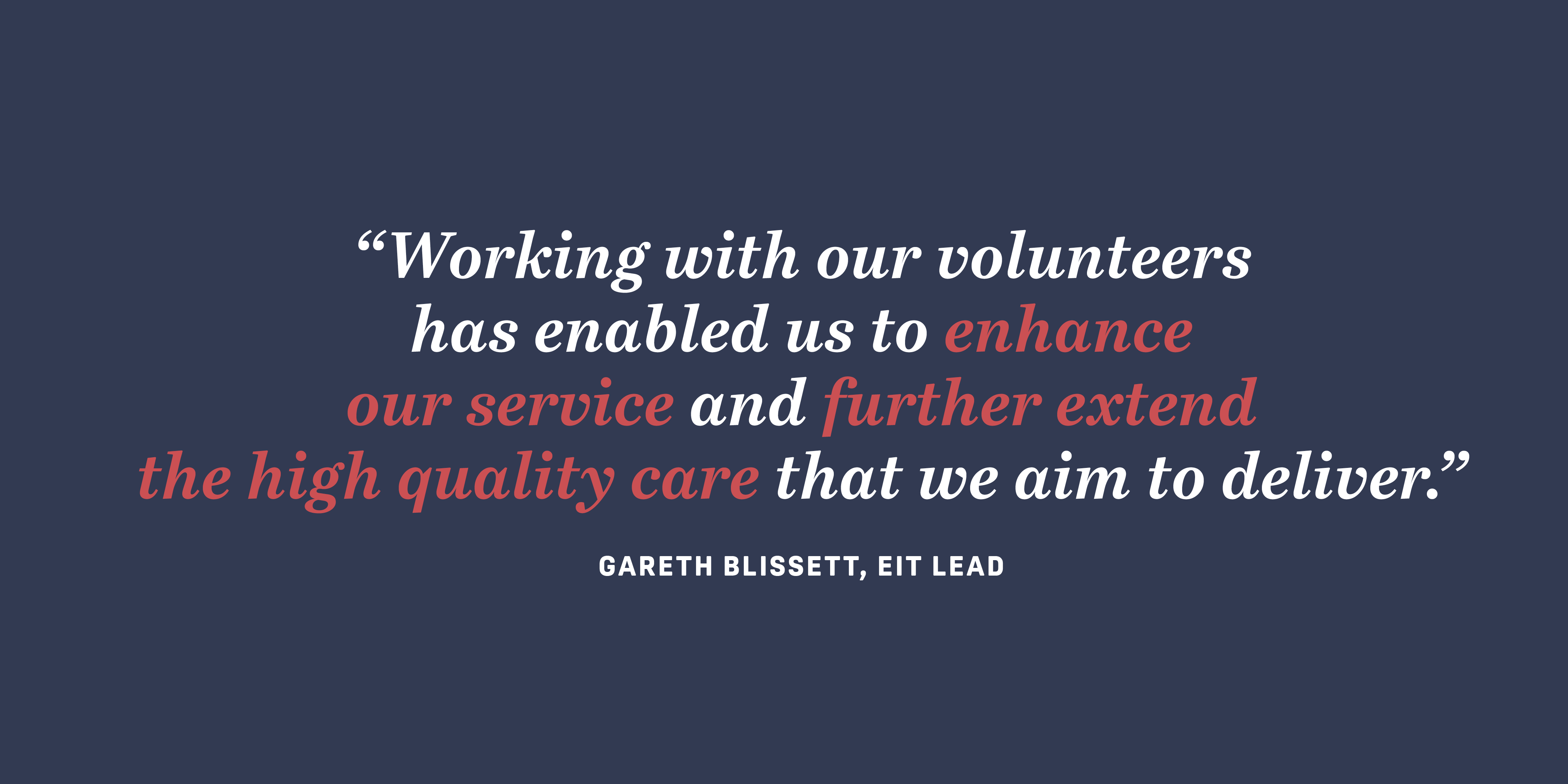Measuring the impact of volunteering
Volunteers are a valued part of our health and care services. They complement the work of staff, and improve the experience of patients. The difference volunteers make is clear to many people who work alongside them, and those who have benefited from their time, skills and kindness. However the impact they have is not always clear to those who plan, lead, and manage health and care services, as there is a lack of data collected and a lack of evaluation and research. We are on a mission to change this, read more in our report here.

To address this challenge we are creating an Impact & Insight Toolkit, which will guide organisations to:
- DEFINE what their volunteering project is trying to achieve, what problems it will solve, and who will benefit (e.g. patients, staff, volunteers, organisation)
- DESIGN a service model and how to evaluate it - in the form of a logic model (or ‘theory of change’) and what data we need to prove the outcomes within it
- COLLECT the data needed to demonstrate the outcomes, and provide the insights that allow us to do the project better
- ANALYSE the data so we can prove that the project is delivering the impact as designed
- Get in touch to tell us your needs - help@helpforce.community
Case study: West Suffolk Bleep Volunteers
West Suffolk designed the Bleep Volunteer service to help clinical staff spend more time on wards with patients and improve patient care and experience.
How Bleep Volunteers works
Bleep Volunteers operate on shifts and undertake a range of clerical/ admin/ delivery tasks that were previously undertaken by nurses, pharmacists and in some cases hospital porters. These can include;
- Delivering To Take Out (TTO) drugs to wards and back to pharmacy if unused/ unneeded
- Delivering lunches for patients
- Helping porters move patients
On a shift one or two volunteers are issued a single bleep. If there are two volunteers they usually split their shifts so one has the bleep for the first half, and the other for the second half. The volunteer with the bleep is contacted by staff on medical wards and in the pharmacy. Volunteers without the bleep, or who are not getting requests coming by bleep, proactively visit the Pharmacy and deliver outstanding TTO drugs to various wards as required. After the initial group of volunteers were trained, they acted as mentor/ buddies to newer volunteers to train them up.
Timings and ward selection
There were initially two shifts a day for 5 days a week (9am-1pm and 1pm to 4pm) with 1 volunteer per shift. This has now increased to 3 shifts a day (adding 4pm-7pm), plus Saturday, with 2 volunteers per shift. This equates to c. 30 shifts per week and c. 20-30 volunteers required to run the service.
All wards benefit from Bleep Volunteers, however the most benefit is felt on short-stay rapid turnover wards.
Tracking and management
All deliveries made by Bleep Volunteers are tracked and logged on a paper form which logs the task, the time requested, who asked for it, and whether it was completed. These logs are retained for 2 months and used for tracking purposes.
Volunteer logs are put up in the volunteer office showing the shifts and the names of volunteers who are availble to do them. Volunteers can change times on the log. (This system could be done online through a shared google doc or similar.) West Suffolk have also considered setting up a WhatsApp group for volunteers to enable them to communicate with each other, swap shifts, etc.
